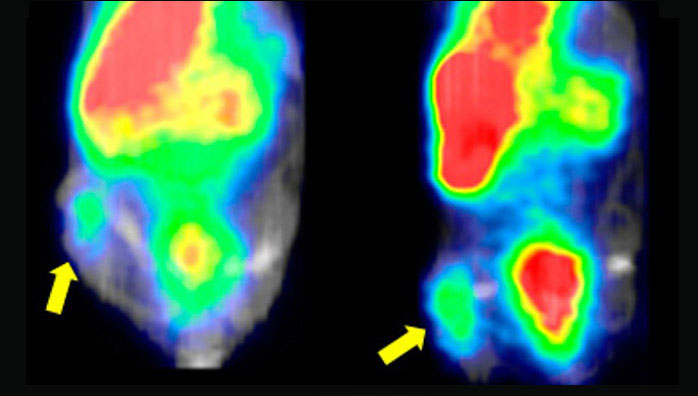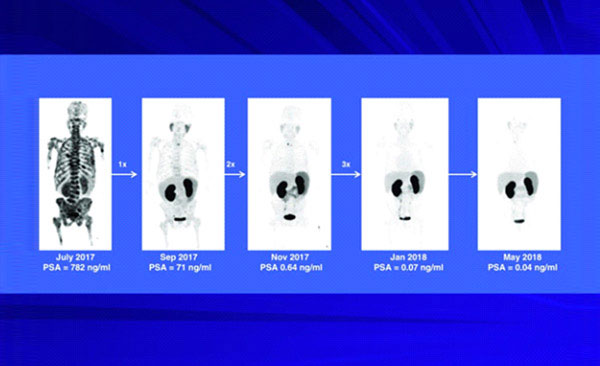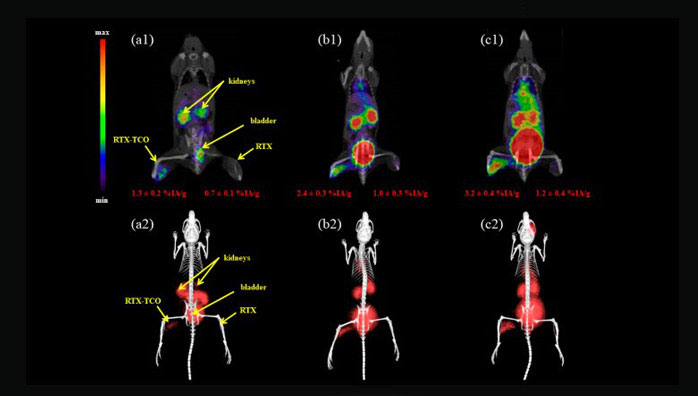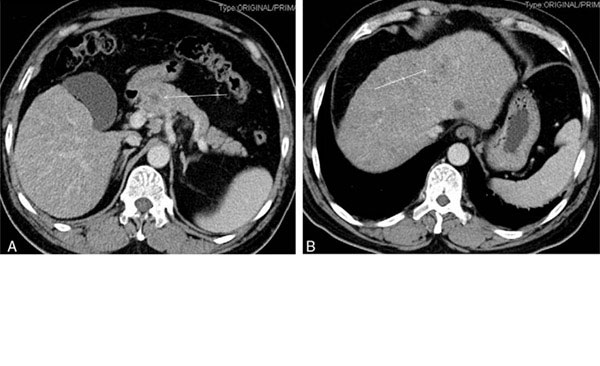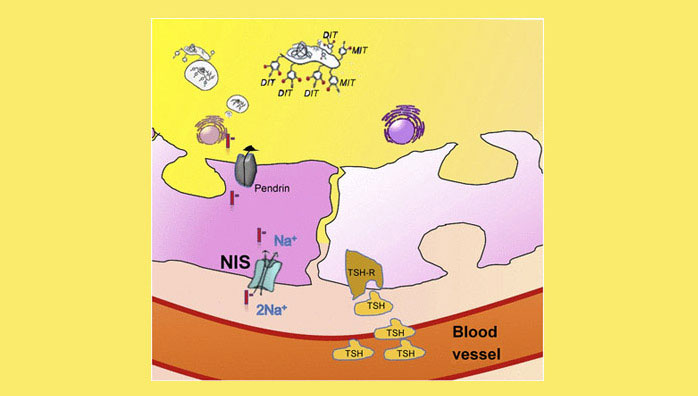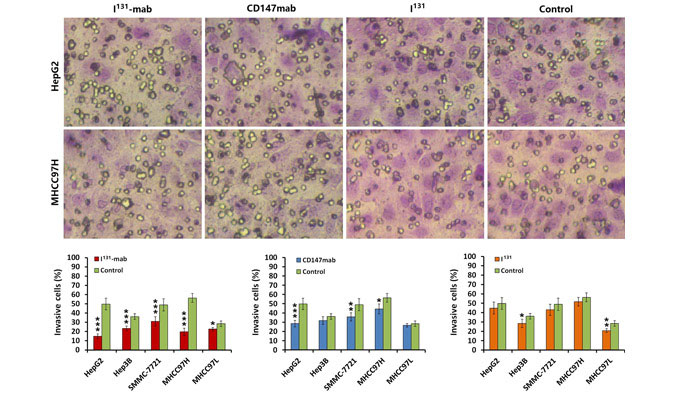Objective:
Brachytherapy employing iodine-125 seeds is an established treatment for low-risk prostate cancers. Post-implant dosimetry (PID) is an important tool for identifying suboptimal implants. The aim of this work was to improve suboptimal implants by a subsequent iodine-125 seed top-up (reimplantation), based on the PID results.
Methods:
Of 255 patients treated between 2009 and 2012, 6 were identified as having received suboptimal implants and were scheduled for seed top-up. Needle configurations and the number of top-up seeds were determined based on post-implant CT images as well as a reimplantation treatment plan. An average of 14 seeds per patient were implanted during each top-up. Dosimetric outcome was assessed via target parameters and doses received by organs at risk.
Results:
All six patients had a successful top-up, with a 67% increase in the mean dose delivered to 90% of the prostate volume and a 40% increase in the volume that receives 100% of the prescribed dose. However, the final dosimetric assessment was based on the same seed activity, as the planning system does not account for the decay of the initially implanted seeds. Although physical dosimetry is not influenced by different seed activities (doses are calculated to infinity), the radiobiological implications might be slightly different from the situation when optimal implantation is achieved with one treatment only.
Conclusion:
Seed reimplantation in suboptimal prostate implants is feasible and leads to successful clinical outcomes.
Advances in knowledge:
Suboptimal prostate implants can occur for various reasons. This work shows that seed reimplantation as salvage therapy can lead to an optimal dosimetric outcome with manageable normal tissue effects.
Low dose rate (LDR) brachytherapy employing radioactive seeds is a well-established treatment for low-risk prostate cancers. In our centre, implants are conducted with iodine-125 seeds (Oncura RAPID Strand, model 6711; Oncura Inc., Arlington Heights, IL) with an average seed activity of 0.395 mCi to deliver a prescribed dose of 145 Gy (to >98% of the prostate). Treatment planning and post-implant dosimetry (PID) are completed using SPOT-PRO™ v. 3.1 (Nucletron, Utrecht, Netherlands) software based on transrectal ultrasound images (for treatment planning) and CT images (for PID).
The most commonly reported parameters that are indicative of the dosimetric quality of the implant are D90 (the dose delivered to 90% of the prostate volume) and V100 (the volume that receives 100% of the prescribed dose). Several studies showed a link between the quality of implants and the biochemical outcome [1–3]. Therefore, to minimise the risk of recurrence, it is recommended to achieve a post-implant D90>140 Gy and V100>90% [1].
PID is an important quantitative tool for the assessment of LDR implants; therefore, it is recommended as a routine procedure by several professional organisations [2–5]. Besides evaluating the overall quality of the implant, PID can assist in the dosimetric assessment of the organs at risk (OARs). Although the dosimetry of OARs cannot be adjusted if overdosed, the radiation oncologist can have a closer follow-up of those patients at risk of developing normal tissue sequelae.
Another role of PID is to identify suboptimal implants that can arise owing to organ movement during the procedure, geographical misses of seeds or technical equipment errors. Despite all the efforts and experience of the brachytherapy team, suboptimal implants do occur and they have to be dealt with. Although several centres encounter such events, there is a lack of guidelines or even indications as to how to proceed to improve the final outcome. The major challenge is perhaps the planning, which cannot be done in a conventional way, i.e. based on the ultrasound study of the transrectal volume, owing to lack of previously implanted seed visibility [6]. Therefore, post-implant CT images are the most convenient to use for this task, as the original seeds can be seen and extra seeds can be added to cover the underdosed areas of the prostate.
The aim of this work was to present our experience with iodine-125 seed reimplantation (top-up) in a cohort of six patients whose initial implant was suboptimal as identified by PID. The technical and dosimetric challenges of seed top-up implants are investigated.
MATERIALS AND METHODS
Of 255 patients treated with iodine-125 permanent seed brachytherapy between January 2009 and July 2012 at the Royal Adelaide Hospital, SA, 6 were identified as having received suboptimal implants and were scheduled for seed top-up. The suboptimal implants were attributed to equipment/technical problems (two cases), patient movement during implantation (one case) and uncommonly large oedema (one case); however, for two patients, the causes of underdosage were unidentified. Therefore, the cold spots were random from patient to patient, although underdosage of the base was more common than the involvement of other prostate regions.
The decision to undergo reimplantation was based on the PID results using ultrasound–CT image coregistration, which our centre’s standard technique (the methods are described in detail in a previous report [7]). However, in all situations, the main dosimetric parameters were independently confirmed by a second medical physicist, and in some cases, when the result was uncertain, an alternative PID technique was also used, such as CT-delineation-based PID or MR–CT image coregistration-based PID. As with all our PID data, the results were reviewed by the patient’s radiation oncologist, who, after following the PID prostate D90 criteria given below, decided whether the patient should be scheduled for a seed top-up or not.
At our centre, we categorise the quality of the implants according to the following PID D90 values:
D90>145 Gy—good implant [as recommended by Groupe Européen de Curiethérapie–European Society for Radiotherapy & Oncology (GEC-ESTRO) guidelines] [5]
130 Gy<D90<145 Gy—adequate by local definition (within 10% of the prescribed dose).
110 Gy<D90<130 Gy—potentially acceptable, subject to re-assessment of PID with another PID technique and evaluation of cold spots. If cold spots are identified in areas that were not positive on transrectal ultrasound biopsy, we consider the implant acceptable. If the implant is subsequently deemed inadequate, the patient is scheduled for a seed top-up procedure.
D90<110 Gy—the implant is inadequate [1,5]. The patient is scheduled for a seed top-up procedure.
For those patients identified as having an inadequate implant, a top-up treatment plan is generated. This is designed using the initial PID ultrasound–CT images as the reference to determine the location and the number of seeds required to improve the dosimetry.
The prostate target (hereafter referred to as the target) is defined as the clinical target volume, and acceptable target volumes for initial implants are between 15 and 55 cm3. A planning target volume (PTV) is also defined during preplanning but is not considered in this report, as its dosimetry trends reflect those of the target values.
The information comes from:
https://www.ncbi.nlm.nih.gov/pmc/articles/PMC3664978/





